
Traveling in South America with the Sony NEX-7 & Leica glass
By Ashwin Rao – See his Blog HERE
Sony NEX-7, Zeiss 24 mm f/1.8 Sonnar
Hi everyone, recently I had the good luck to receive on of this past year’s most desired cameras, the Sony NEX-7. I initially considered myself a long shot to purchase this camera, due to early reports of difficulties of this camera’s ability to handle wider Leica lenses. On top of this, I am a dedicated Leica M user, and already have a similar camera in the Ricoh GXR/M-mount. Thus, why even bother with a new camera, with 2 ways to already use M lenses?’
Well, the answer is a bit multifactorial. For one, I am, like many of you, a bit of a gear head, and GAS bothers me on occasion, as well. Second, I was curious about the NEX system, and in particular, the innovative NEX-7 and it’s Tri-Navi system. Third, at 24 MP, the NEX-7 has the potential to out-resolve the M9, especially if the rumors at true that it possesses a weak anti-aliasing/blur filter. Fourth, I was curious about how enjoyable it could be to focus Leica lenses via the NEX-7’s wonderful 2.4 MP EVF. The form factor of the NEX, with it’s integrated EVF, tiltable external viewfinder, and compact build, also was very intriguing. Finally, over the past few months, as the camera has become gradually more available, a slow trickle of positive reviews have come in, including comments in which Leica glass behaved favorably on this camera. And thus, I started to feel that I needed to give this camera a try.
Sony NEX-7, Leica 35 mm f/1.4 Summilux ASPH FLE
I had hoped to procure the NEX-7 in time for a coming trip to Argentina and Uruguay, but after reviewing a few sites and talking to dealers with long waiting lines, I started to doubt the possibility to taking this camera on the road for a real world work-out. Then, this February, my chance finally came, as a good friend, who had ordered 2 NEX cameras, found himself with 1 too many, and contacted me. The combination of my overall curiosity, along with some of the factors discussed above, sent me over the edge, and I found myself with the lovely NEX-7 in hand.
[ad#Adsense Blog Sq Embed Image]
At this point, I decided to make a bold leap. I would take ONLY the NEX-7 to South America. No Leica. No GXR. Just the NEX-7. Along with me would come a Zeiss 24 mm f/1.8 lens, for wide-angle work, and a host of Leica lenses, from the 35 mm f/1.4 Summilux ASPH FLE to the Leica APO-Telyt 135 mm f/3.4, a notoriously difficult lens to use on the M9 (due primarily to its miniscule frame lines). I purchased a spare battery and a Novoflex Leica M-to-NEX adapter, and decided to go it solo. NEX-7 or bust, in South America! What follows are my thoughts and experiences shooting this system in Argentina and Uruguay in March, 2011:
Sony NEX-7, Leica 75 mm f/2 APO-Summicron ASPH
Gear
When putting together my kit for the trip, I realized that I had to make some careful choices on what gear to take along with the NEX-7. If the rumors were true, shooting with lenses wider than 28 mm would potentially lead to images with the dreaded red edge and cyan drift. Some say that this is a problem particularly noted in the NEX-7, and not the NEX-5N, and I decided to avoid the problem altogether by purchasing a Ziess 24 mm f/1.8 Sonnar, which acts as a 35 mm focal length equivalent on the NEX-7. Along with this lens, I decided to bring the 35 mm f/1.4 Summilux Asph FLE, essentially a 50 mm equivalent lens, my lovely and often underused Leica 75 mm f/2 APO Summicron asph, and the challenging but wonderful Leica 135 mm f/3.4 APO-Telyt. Both of these lenses are somewhat ugly ducklings in the M-system for a couple of reasons, particularly due to challenges in use. The 75 mm framelines are a bit wonky on the M9 and film M’s, making it a challenge for some to use on a full frame body. Similarly, the 135 mm APO-Telyt is a lens that many don’t even consider when using the M system, given that the framelines for this lens are tiny, and adequate use of this lens requires an additional magnifier for many of us with less than perfect vision. This set of lenses represented a useful range from 35 mm-200 mm equivalent, and I was satisfied that all lenses could see frequent use in a land far away. Below is a list of my entire photographic travel kit, all of which fit into my camera bag.
Sony NEX-7, Leica 35 mm f/1.4 Summilux ASPH FLE
My Travel Kit
Camera: Sony NEX-7
Lenses:
Zeiss 24 mm f/1.8 Sonnar (35 mm equiv)
Leica 35 mm f/1.4 Summilux ASPH FLE (50 mm equiv) (See Steve’s review HERE)
Leica 75 mm f/2 APO-Summicron ASPH (110 equiv) (See Steve’s review HERE)
Leica 135 mm f/3.4 APO-Telyt ASPH (200 mm equivalent)
Bag: Fogg B-Laika Black/Charcoal bag
Miscellaneous gear:
Artisan and Artist silk strap mounted on the NEX7
Novoflex Leica M-mount-to-NEX adapter
Microfiber cleaning cloth
2 NEX batteries & Charger
4 SanDisk Extreme Pro (90 mb/sec) SD cards
Computer:
MacBook Air 11 inch, with supplemental SD card reader
A wonderful thing about this kit is that the whole system listed above, save my computer, fit easily into my Fogg bag, which is nicely discrete and doesn’t look much like a camera bag at all. Not once during my trip did I feel threatened, and further, the kit fit comfortably on my shoulder for 2 straight weeks as I travelled through Argentina and Uruguay.
Sony NEX-7, Leica 135 mm f/3.4 APO-Telyt ASPH
The Travel Itinerary
Now that the kit was assembled, next up to consider was the itinerary. Ultimately, we decided on an itinerary that focused on northern Argentina and Uruguay.
Buenos Aires
Our travels began in Buenos Aires, where we spent 3 days enjoying the city’s plentitude of offerings, photographic opportunities, and fantastic cuisine. Buenos Aires is a wonderfully walkable city with excellent public transportation, and it’s very easy to get around on foot, by bike, or via their subway system. While in Buenos Aires, we visited the amazing Recoleta cemetery, the politically charged San Telmo neighborhood, the colorful La Boca neighborhood, the uber-chique Palermo Neighborood, and a variety of other locals. We sampled the wonderful Tango culture and vibrant nightlife. Buenos Aires is a city that simply doesn’t sleep (well, maybe during the day, LOL), and is well worth a visit.
Sony NEX-7, Leica 35 mm f/1.4 Summilux ASPH FLE
Sony NEX-7, Zeiss 24 mm f/1.8 Sonnar
Iguazu Falls
Upon leaving Buenos Aires, we made our way north to the stunning Iguazu Falls. considered by many to be one of the most powerful and awe-inspiring natural wonders in the world, Iguazu Falls is an amazing showing of how the force of nature can carve true beauty on this world. Some of you may be familiar with these waterfalls from movies such as “The Mission”, but for those of you haven’t experienced them, please do. The closest comparison in the U.S. is Niagara Falls, while Zimbabwe houses the inspiring Victoria Falls. I have seen Niagara falls before, but Iguazu Falls makes Niagara falls look ordinary.
Sony NEX-7, Leica 35 mm f/1.4 Summilux ASPH FLE
Sony NEX-7, Leica 75 mm f/2 APO-Summicron ASPH
Montevideo, Uruguay
Once we had taken in our fill of Iguazu falls, it was off to Montevideo, Uruguay. Talk about a cool city. Tie together this seaside city’s laid back atmosphere with dashes of San Diego and Miami, and you get an idea of Montevideo’s vibe. This was city of evening culture, music, and cuisine. It was the place that surprised me the most and served as the greatest inspiration for my photography. Montevideo’s old quarter and seaside boardwalk were both fantastic places to find Uruguay’s wonderful people living their own lives.
Sony NEX-7, Leica 35 mm f1/4 Summilux ASPH FLE
Sony NEX-7, Leica 75 mm f/2 APO-Summicron ASPH
Colonia, Uruguay
Having enjoyed Montevideo’s laidback vibe and photographic inspiration, it was off to Colonia, Uruguay, which is Uruguay’s oldest city and a designated UNESCO world heritage site. While having a bit of a Disney World-feel, it was full of many opportunities to photograph beautiful sunsets and beautifully crafted colonial architecture. It’s little shops, old cars, and overgrown alleyways make for more fun photographs.
Sony NEX-7, Zeiss 24 mm f/1.8 Sonnar
Back to Buenos Aires and Home
Our last day of travel was spent taking a ferry back to Beunos Aires from Colonia, and catching one of the city’s well-known tango shows, which document a colorful side of Argentine culture. It was a chance to test out the NEX-7’s low light capabilities in an exciting setting.
Sony NEX-7, Leica 35 mm f1/4 Summilux ASPH FLE
Impressions of the NEX-7 while on the road
During the trip, I began to formulate several thoughts on the NEX-7. First and foremost, I found it to be an enjoyable camera for regular use, and additionally, a wonderful format by which to utilize Leica M lenses. M lenses are, in many cases, far more compact than Sony’s own native E-mount lenses, and they seem to balance well on the camera, giving it a dense, weighty, and confident feel. The NEX-7’s tiltable viewfinder, in many instances, allowed for discrete shooting in circumstances where discretion was helpful. Further, the camera’s EVF, which in my opinion is one of the camera’s true innovations, was a joy to use.
Focus Peaking- Good, bad, or ugly?
Regarding focus peaking, I have had extensive experience using this method to manually focus M glass when using the Ricoh GXR. With the higher resolution EVF on the NEX-7 and multiple selectable colors (white, red, or yellow on the NEX-7, versus only white on the GXR), the NEX-7 offers an enjoyable focusing experience. However, the experience is far from perfect. At times, the focus peaking feature is not as sensitive enough to critically focus M lenses, particularly when shot wide open. While the focus peaking does work best when lenses are opened to their widest aperture, I found that at times, my images appeared out-of-focus upon returning home or checking the image review on the screen’s rear LCD. Thus, I often found it best to pre-focus on a scene with the lens wide open, and then stop down to get images that were better focused. I could imagine that this system could be difficult with lenses in which stopping down leads to focus shift, but in this case, none of the Leica lenses that I traveled with are known to have a bad case of focus shift.
That being said, in most cases, focus peaking works fine, and it’s a fun way to use Leica glass. Is focus peaking “better” than using a standard rangefinder focusing technique? In my opinion, the answer is “No”. In my experience, focus peaking is inferior to the RF mechanism for focusing wide and normal lenses, especially the 35 mm f/1.4 Summilux ASPH FLE.
On the other hand, I found focus peaking and the NEX-7, paradoxically, to be more facile at using longer lenses. Whereas the Leica M system does a wonderful job at 28-50 mm focal lengths, many complain of using longer focal lengths on the M system. While I have never had this issue and comfortably have used lenses as long as 135 mm on the M system, I did find it truly enjoyable to use both the 75 mm f/2 Summicron and the 135 mm f/3.4 APO-Telyt on the NEX system. Both lenses seemed to handle well on the M system, and for reasons that were and remain unclear to me, I achieved a higher percentage of in-focus images on the M system than I was able to with the 35 mm f/1.4 Summilux FLE lens. I’ll let you all debate why this may be the case. But it was my experience.
Sony NEX-7, Leica 135 mm f/3.4 APO-Telyt ASPH
Sony NEX-7, Zeiss 24 mm f/1.8 Sonnar
Ergonomics
Ergonomically, the NEX-7 is a good fit in my hand. In fact, I found the NEX-7 to be a pure joy to hold in hand. Whereas I have had difficulty holding other NEX cameras in hand, given their diminutive size, the NEX-7 and it’s fantastic grip are a far better ergonomic fit for me. I found the Tri-Navi feature set to be a wonderful way to adjust ISO, exposure compensation, and shutter speed parameters. Having all of these parameters easily accessible via on-camera controls, in addition to having aperture control directly on Leica’s lenses, afforded me with a terrific degree of control over image making parameters, and I found the Tri-Navi system to be a joy to use. Further, the EVF was appropriately placed and easy to use in concert with the rear LCD screen. In a few instances, I found that my camera strap would cover the EVF’s eye sensor, and in these instances, the rear LCD would go black, inappropriately. While this was not a common experience, it was a bit annoying when it happened.
Another minor quibble is the menu system and layout of the NEX -7. While the menu system is laid out in a reasonably logical way, I simply didn’t find it intuitive, even after prolonged use. Having to press different buttons to access different aspects of the menu was something that I got used to, but only with a lot of work. The menu system of other cameras, such as the Leica M9 and Ricoh GXR, are far more intuitive in regular use. Despite this, once you set up the NEX-7 in a manner in which you feel comfortable, you rarely have to delve into the menu system, and it essentially disappears, which is a good thing.
My final quibble with the NEX-7 was placement of the video record button. I found it very annoying when I was going for a photo, and the video record had been inadvertently triggered by my larger fingers. For future iterations of this camera, I’d like to see it lock out or different placement for this button.
Minor quibbles aside, using the Sony NEX-7 was a joy, in terms of pure usage. This was the case both with adapted Leica lenses and the Zeiss E mount 24 mm Sonnar.
Sony NEX-7, Leica 135 mm f/3.4 APO Telyt ASPH
A word on the Zeiss 24 mm f/1.8 Sonnar
At the onset of my trip, I elected to purchase the Zeiss 24 mm f/1.8 Sonnar to accompany my Leica M kit. I did this for several reasons. For one, I thought that it would be nice to have one high-quality AF lens to couple my manual focus kit, in events where I could hand off my camera to others who were not used to manual focus. For example, for moments where I wanted pictures of myself of my traveling group, it’s nice to have an AF lens to hand off, as using this lens is far more intuitive to the majority of users.
Second, I figured that wide Leica M lenses, such as the Summilux 24 mm f/1.4 are equally large and have a higher chance of producing images with color shifts. This phenomenon, to my knowledge, hasn’t been widely characterized for the Sonnar.
Finally, given that this was Zeiss behind the design of this lens, I hoped that image quality would be comparable to that produced by Leica M lenses, despite the price differential. Sure enough, the Zeiss performed admirably on the trip. I found it’s autofocus speed to be sufficient, and image quality to be exemplary. All in all, I have been very happy with this added purchase to my Sony NEX-7 kit.
Image quality
After all, this is what we are all about, right? LOL. Seriously, as a Leica M shooter, I am used to some of the best IQ available in 35 mm photography. Reading accounts from around the web, I was being lead to believe that the NEX-7 was capable of producing outstanding detail in its image. I was also led to believe that Leica lenses seemed to talk well with the NEX-7 sensor, particularly wide normal, normal, and telephoto M lenses.
Sony NEX-7, Leica 135 mm f/3.4 APO Telyt ASPH
So what do I think about IQ, after several weeks and over 1000 images taken while on the road? Here’s my impression….
The Sony NEX-7 does an admirable job of bonding with Leica M lenses, but it is No M9, in terms of IQ. Images, when brought up on my high Gamut 27 inch home monitor, are slightly flatter and less “3D” than M9 images. The pop that I am so often blown away by when looking at M9 files, isn’t quite there. There seems to be less foreground-background separation, maybe due in part to the 1.5x crop factor that the NEX-7’s sensor imparts. It may be due to the NEX-7’s AA filter, which I suspect is light. It may be due to the CMOS versus CCD properties. It may simply be due to my own perceptions or false perceptions, but while I don’t have side-by-side comparisons, I feel that there is a slight lag in IQ at base ISO’s, when comparing the Leica M9 and Sony NEX-7. Take that with a large grain of salt, but I say it with confidence.
Further, I find that noise is more apparent in NEX-7 files, when compared to M9 files, at lower ISO’s. Maybe it’s the added megapixels, thus leading to an increased on-screen magnification, but I definitely see more noise, particularly in the shadows, in NEX-7 files than M9 files. In stark contrast however, NEX-7 files are fare more useable in High ISO settings than digital Leica M files. I tend to avoid pushing ISO’s above 800 on the Leica M9, but I’d be comfortable using the NEX-7 up to nearly ISO 3200, and certainly to ISO 1600. In one instance, I accidentally ratcheted up the NEX-7’s ISO to 16,000 during a Tango show, and coming home, the images still looked great. Below is one example:
Sony NEX-7, Leica 75 mm f/2 APO-Summicron, ISO 16,000!
And an image at the same show, at a far more reasonable ISO:
Sony NEX-7, Leica 75 mm f/2 APO-Summicron, IS0 800
Even with post-processing NEX-7 RAW files, I don’t see much banding or digital artifacts. The noise properties of NEX-7 files at high ISO is generally pleasing. Overall, I find the NEX-7 to be a better low light machine, by quite a bit, than the M9. But I don’t think that many would be surprised to hear that statement.
In terms of post processing NEX-7 files, I found these files to be quite responsive to editing in Adobe Lightroom. NEX-7 files are a joy to work with, and don’t break apart with digital pushing and pulling, dodging/burning, or other techniques. NEX-7 RAW files do in fact offer a fair bit of creative latitude in post processing, and I’d like to commend Sony on a job well done in this department
Conclusion
All in all, was I satisfied my Sony NEX-7 travel experience? Absolutely! Would I use this as a primary system for Leica M lenses? Once again, absolutely? Am I satisfied with image quality coming from this camera? Yup. IQ is right up there with high-end digital SLR’s and mirrorless camera offerings? Is IQ comparable to image quality coming from the Leica M9? As stated, to my eyes, the images produced by the NEX-7 are slightly flatter, with less 3D pop, than what I see coming from my Leica M9 at lower ISO’s. In contrast, I find the high ISO capabilities of the Sony NEX-7 to be far better than that of the Leica M9. Would any of these things matter for web-sized images or smaller prints? Nope, I doubt it. But for the pixel peepers among you, I feel that it is fair to convey my impressions. And that’s all they really are: impressions of a camera that I have greatly enjoyed and plan to keep in my kit for some time.
NEX-7, Leica 35 mm f1.4 Summilux ASPH FLE
Further, for the photographically inclined, both Argentina and Uruguay have so much to offer. I suggest that you consider these destinations for your future travel plans. The people, the food, the sites, and the culture are all remarkable and worth directing your collective lenses toward.
I hope that you have enjoyed the words and images (which, by the way, were all edited and processed on the road, using the 11 inch MacBook Air). Until the next time, my dear Huffites, it’s Ashwin, signing out.
NEX-7, Leica 35 mm f1.4 Summilux ASPH FLE
Sony NEX-7, Leica 75 mm f/2 APO-Summicron ASPH
NEX-7, Zeiss 24 mm f/1.8 Sonnar
Sony NEX-7, Leica 135 mm f/3.4 APO Telyt ASPH
From Steve: I want to thank Ashwin for yet another wonderful report! To see Ashwin’s blog just click HERE. His Flickr stream can be seen HERE.

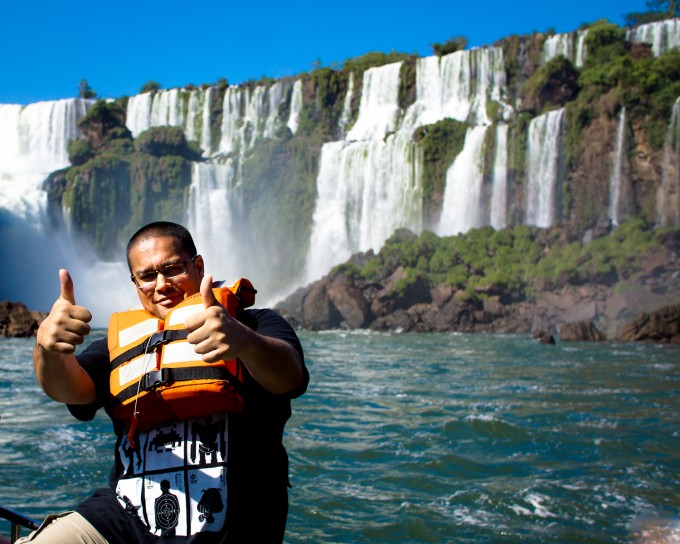

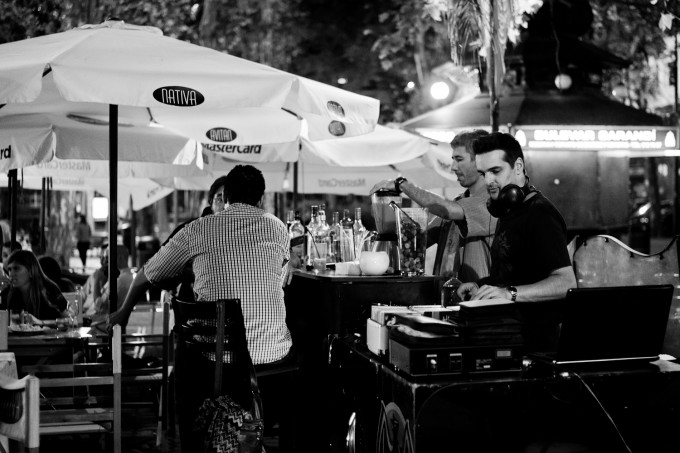
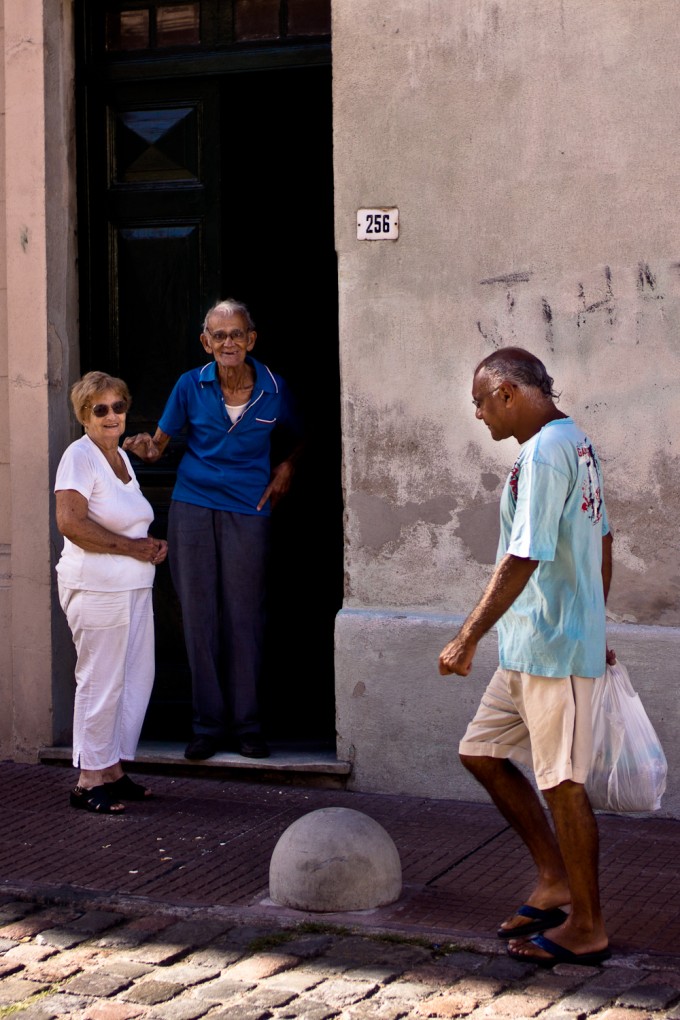
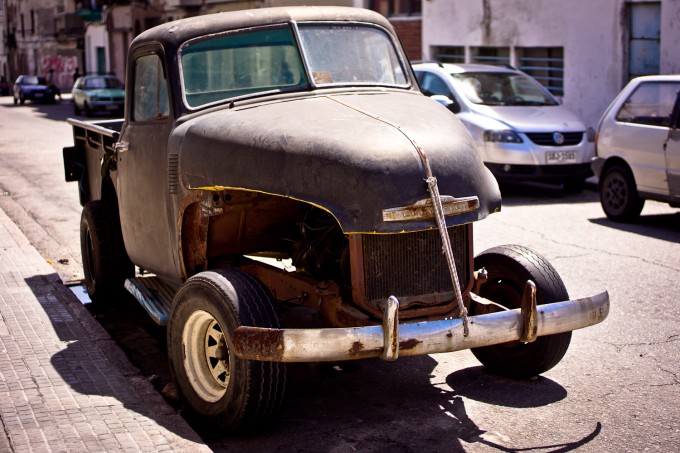
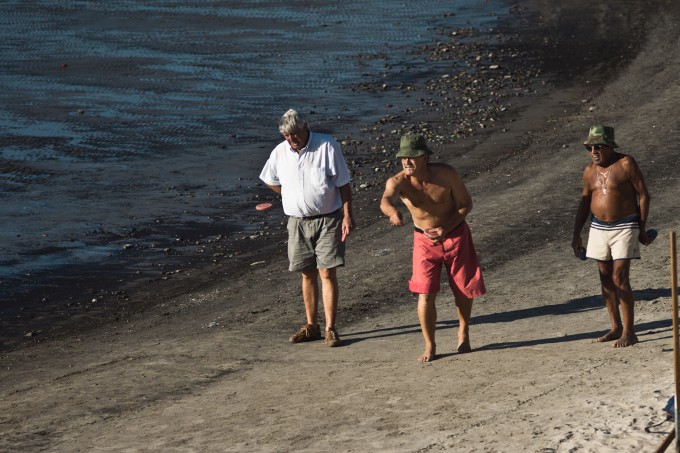
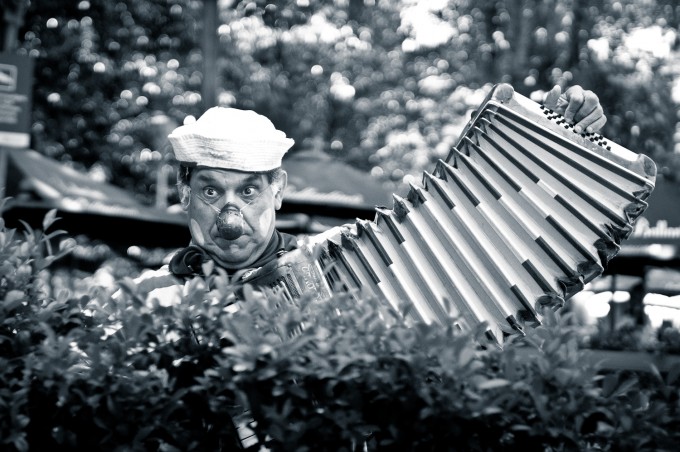

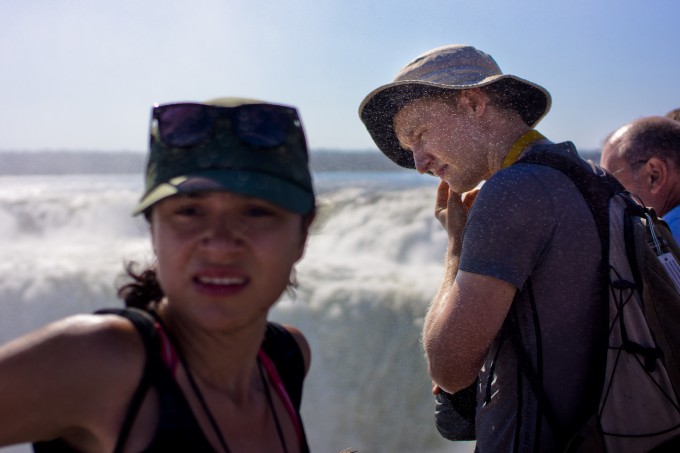
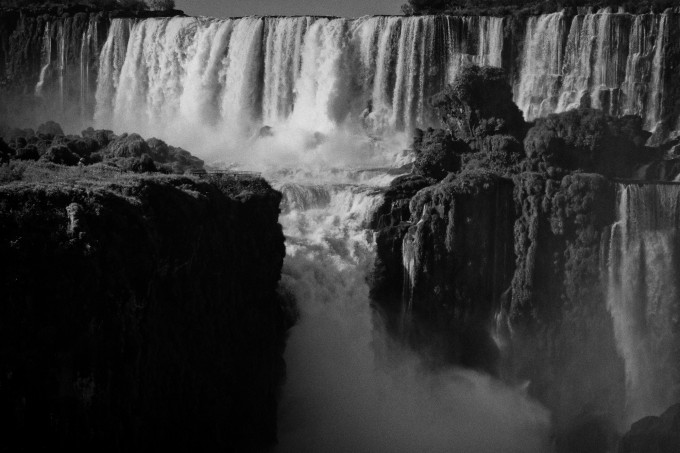
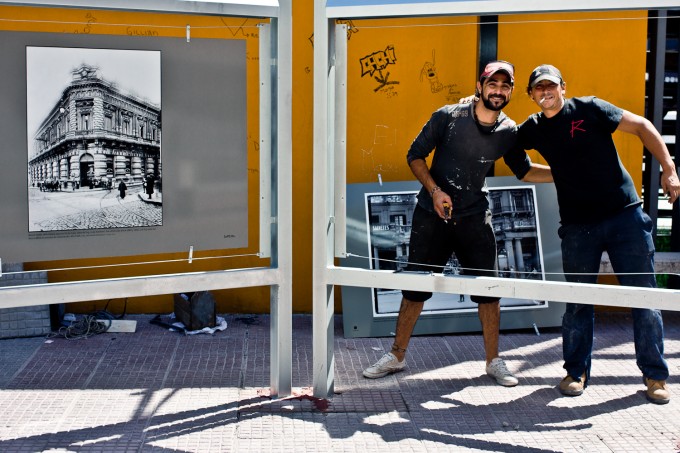
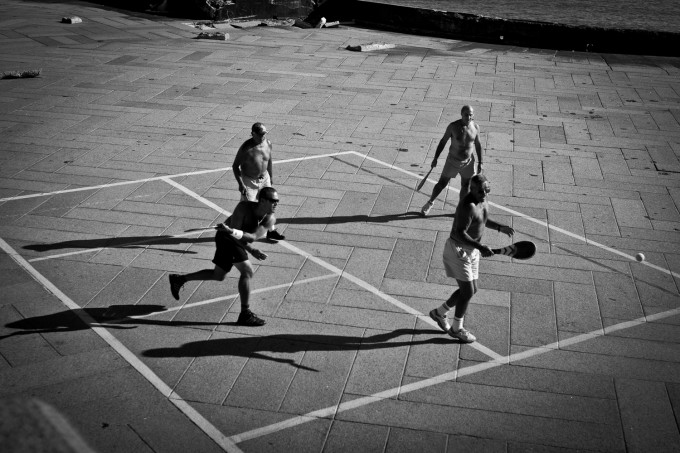
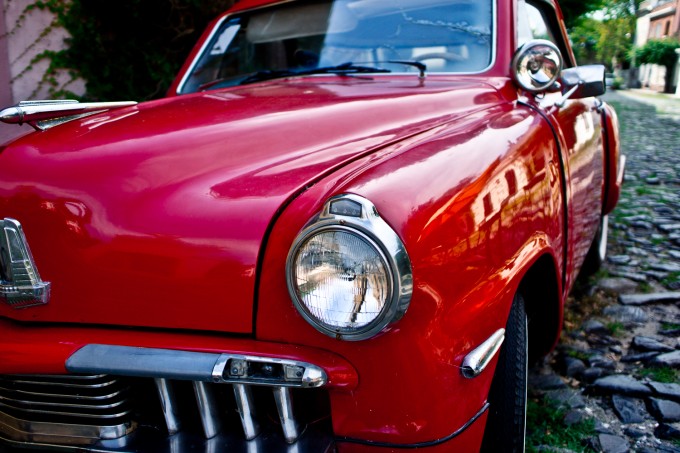
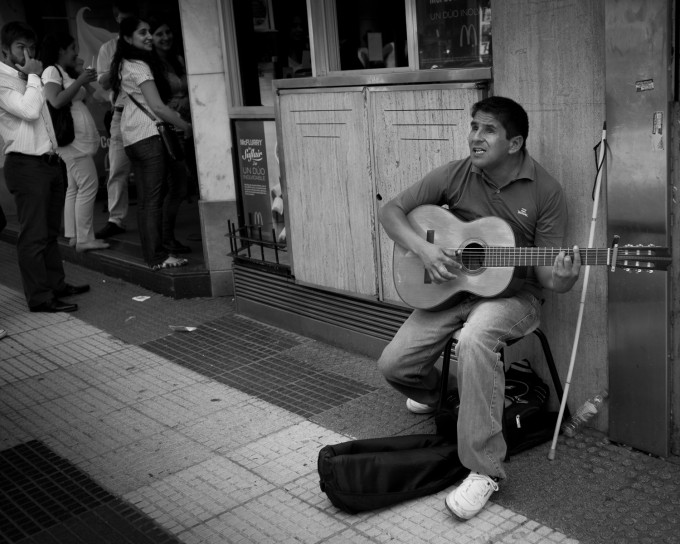
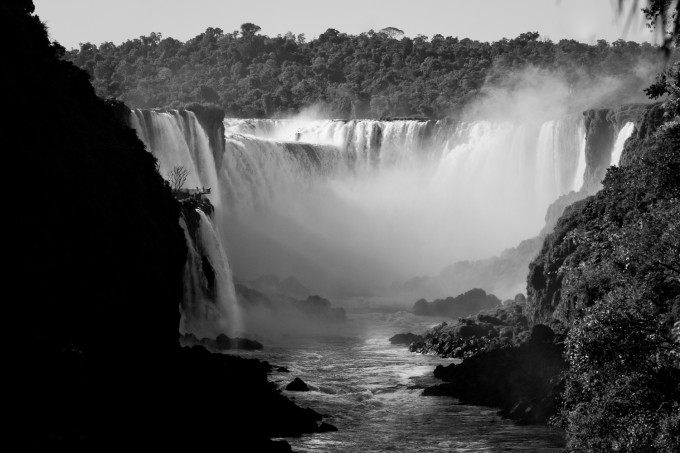
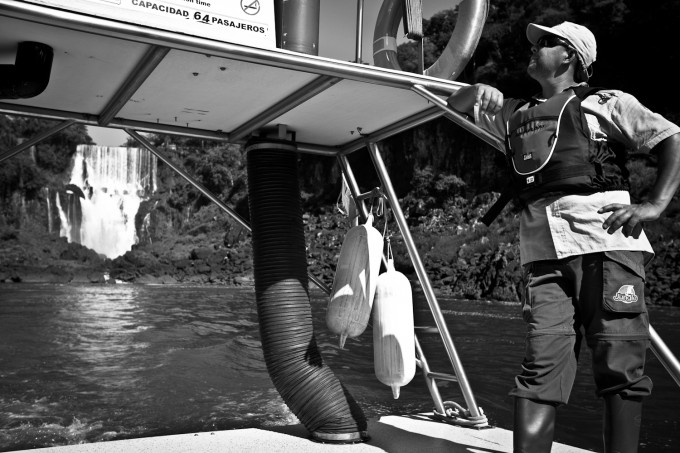
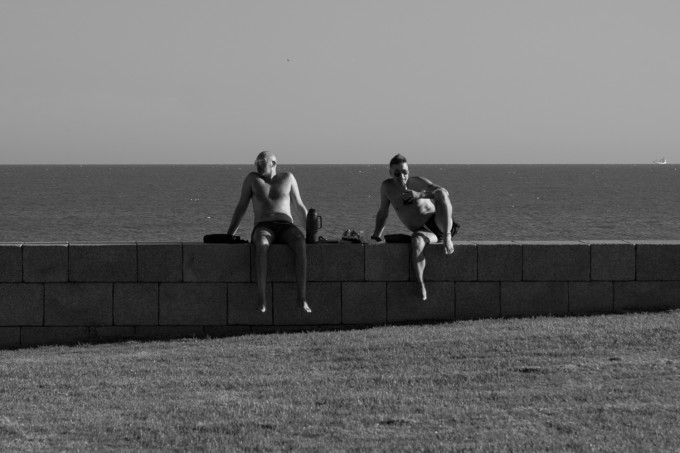
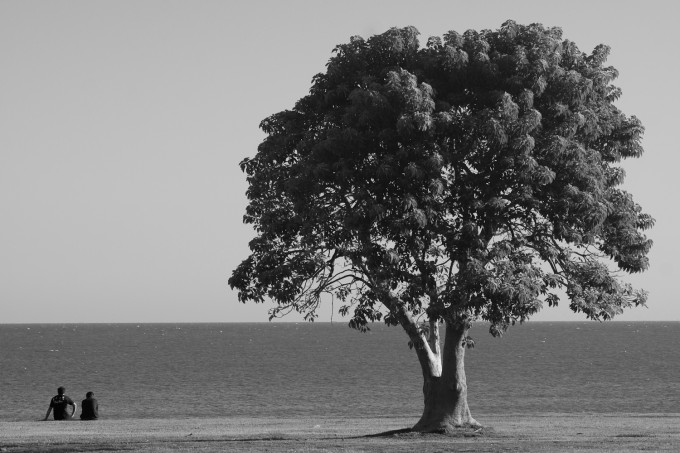
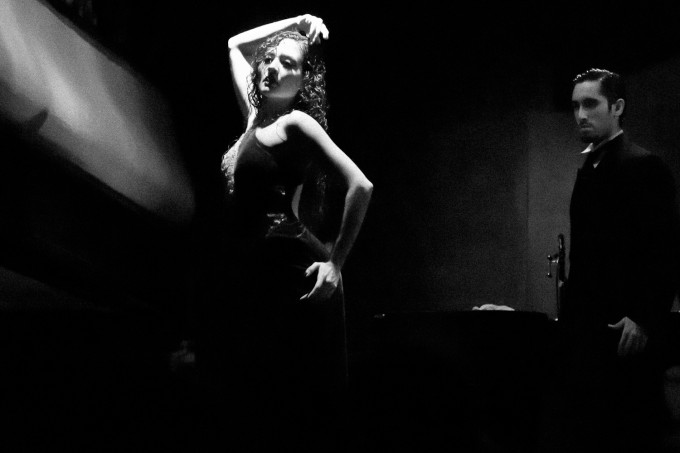
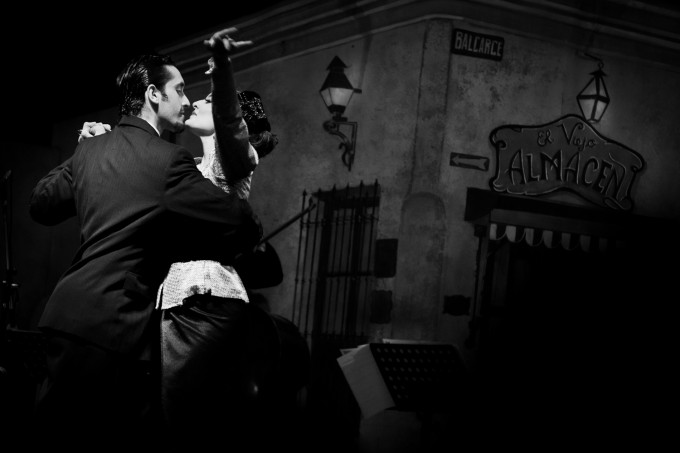
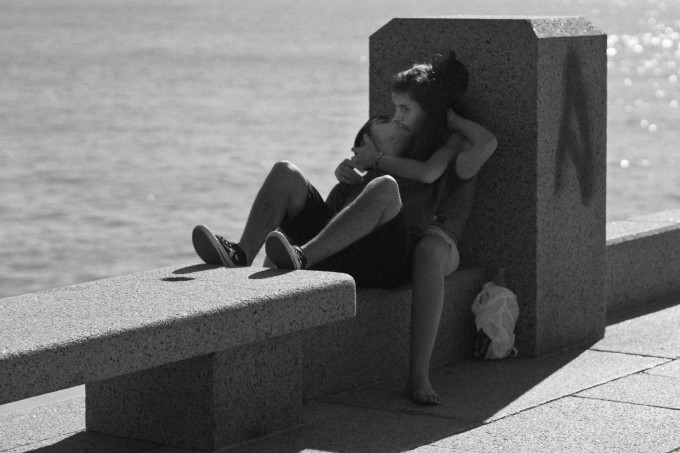
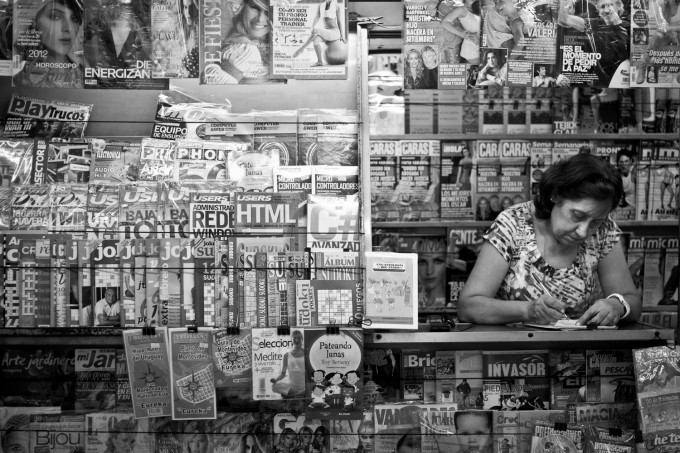

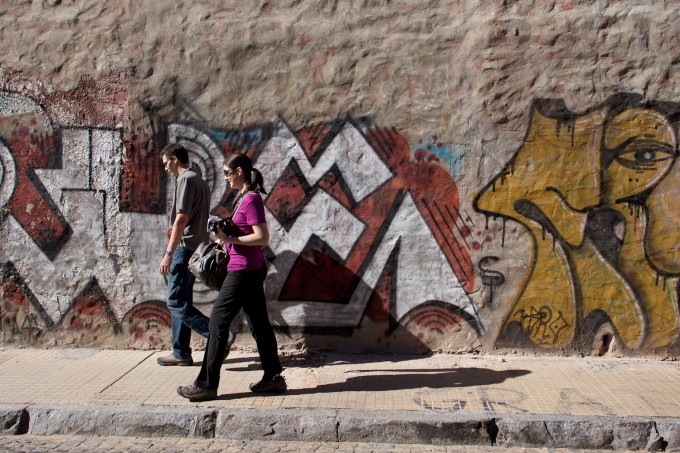
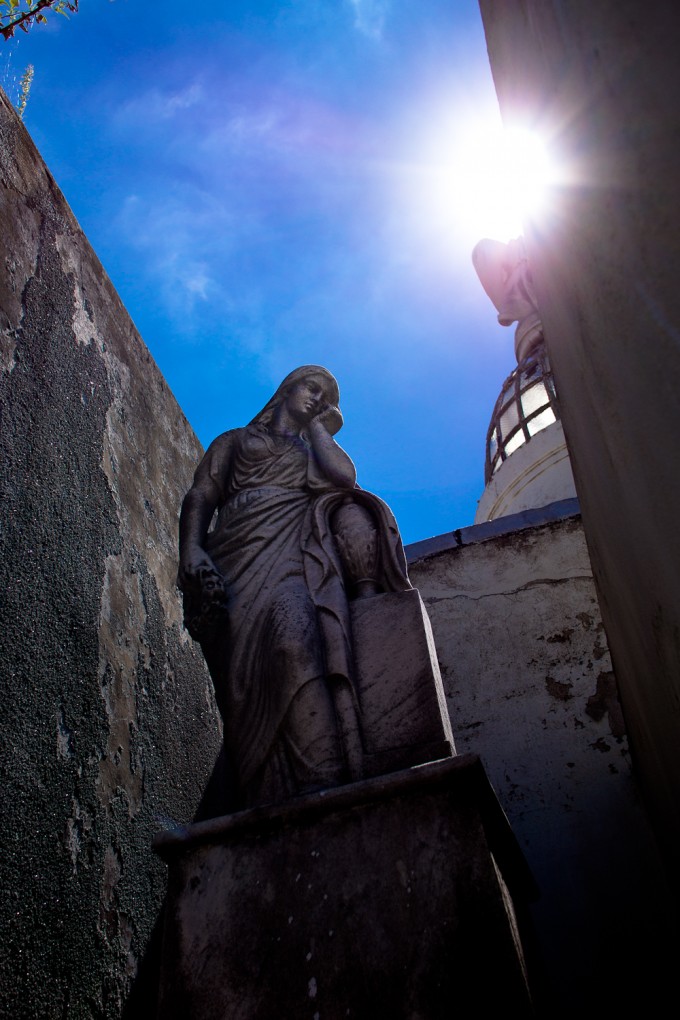
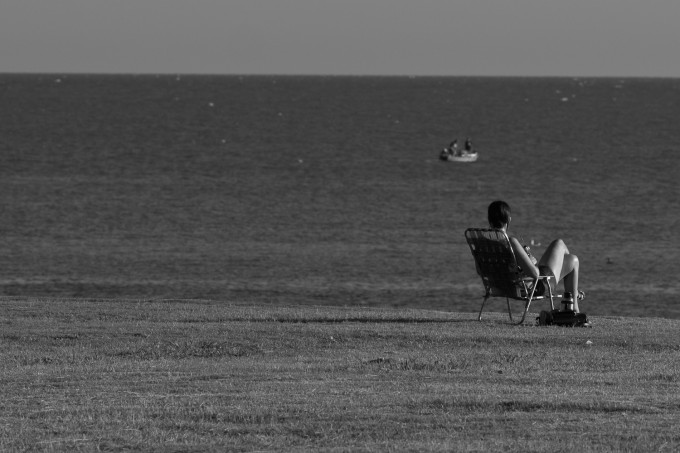



Great article and even better photos … Cheers!
Agree. yeah, see the images in Nacho’s favorites. Yeah, not being rude but just want to understand that what am i missing?
I’d concur there although i see many people love the photos.
To me it looks the IQ are just average. What am I missing?
Dear Ashwin,
You are one great photographer! Quite some of your pictures really wawed me. And I was specially pleased that you choose the same camera concept as I did: the NEX-7 with M-mount lenses, although I don’t have Leica money and use solely Zeiss ZM lenses.
Steve has been so kind to publish my article of my first experiences with this set, early February, and having used it for two more months in the meanwhile, I can say that I have exactly the same experience and opinion as you do in almost all aspects. Concerning focus peaking, I’m clearly a bit more enthousiastic than you are, although I turn the focus ring sometimes a few times back and forth, to find the “peaking center”, in those few occasions that indeed the indication is less obvious. Still I find it even then a joy to use.
Concerning IQ, I can’t compare with the M9, not posessing one for myself, and I found it to be a pleasant surprise that you express yourself in terms of “slightly less…”, and that you even appreciated the NEX-7 better in low light circumstances. Taking the enormous price difference in account, it only assures me of having made the right choice. I have to say, that I find your pics of an exceptional IQ. And as far as the minor 3D-pop is concerned, I believe it’s (mainly) due to the crop factor. By the way, that’s why I’d immediately go for a “NEX-10”, once Sony would decide to create a full frame version. For the rest, I’m PER-FEC-TLY happy with the IQ of my NEX-7/Zeiss ZM set. You proved once again, that it’s the man who makes the picture – and that the camera is only the tool.
I’m so glad that you shared your experience with us. It’s a real promotion for, what I’d like to call, “modern traditional photographing” – manual shooting with modern gear. I surely hope it’ll help a bit to bring more young photographers to this art, that IMO is so much more satisfactory than shooting with automated tools and stimulates so much more the creativity.
I really hope to see more of you on this site! Keep it up! 😉
Sharper, crisper and has more detail is because of two things. The mtf advantage of a larger sensor, and the artifacts introduced by removing the AA filter, which many perceive as better sharpness. Take the NEX-7 sensor, make it 135 size, and remove the AA filter, and it’ll kill the current M9 sensor.
Do you use separate sharpening processes, depending on the sensor? Cameras with AA filters need deconvolution sharpening, and you can add a little grain in post to achieve some nice artifacts which will give you similar “detail.”
I’m not saying you guys aren’t seeing what you’re seeing. I’m just explaining why it is you’re seeing what you’re seeing.
It isn’t a 3 year old sensor in the M9. It’s essentially based on an 8 year old design that really only has size going for it compared to the aps-c sensors on the market. It simply isn’t a brilliant piece of tech, compared to current fullframe sensors from the likes of Sony, especially past base ISO.
A lot of users that are new to AA-less cameras are wowed by what they think are magical qualities, but, really, removing the AA filter introduces artifacts that are perceived as more detail, which, for some reason, many shooters seem to like. There’s really no magic in the old Kodak sensor, and hopefully, now that Kodak is out of that game, Leica will go with Sony for their future M camera sensors.
That being said, removing the AA filter does help with angled light rays at the sensor periphery, so it makes sense for Leica to do this, especially as pixel counts go up, which will reduce artifacts.
Recently I acquired an NEX 7 for essentially the same purposes you highlight in your review . I have been looking for a small light weight ADDITION to my M9 kit (I work with 2 bodies). I was not looking for an Alternative so I don t care about wide angles being very happy with my M9 s. The two areas I always want when I travel to do street shooting are (1) longer reach …135 on an M is just too difficult to depend on and (2) high ISO performance .
Overall I was very disappointed and after 4 individual test shoots ..I returned the NEX 7 for a refund.
Some of my findings could be attributed to the “eye of the beholder” but that isn t much of a benchmark . My benchmark was the M9 image quality not the best at everything (clearly my Nikon s have better high ISO) but I expected the images be included in a collection with M9 images .
Four key areas disappointed :
1. Focus peaking is pretty great in certain situations and it can be very fast . But with a 135 (180FOV) shot wide open its not accurate like a Nikon D3S would be . So I would be focusing at f3.4 and stopping down to F8 to get enough depth to cover focus error.
2. Camera motion…the small size and low mass coupled with a 23MP APS_C sensor makes careful technique important . Not at all consistent with hand held street shooting . Much worse than the M9 .
3. Color ..I found the files processed in LR to be flat and not particularly pleasing . I even used a Colorchecker to build a custom profile . Since I shot in 4 different situations in locations I am familiar with …..I know the color just does t match the Leica M9 files . The glass is the same so its either the sony sensor/processor or just poor camera profiles in LR .
4. Noise ..my findings are quite different . The Nex 7 has way too much noise to be considered even good at ISO above 400 . You can see noise in the shadows even at base ISO . You can always go to black and white and use noise reduction but then the detail turns to mush .
This is not to say if you want a small high MP camera and plan to use the sony AF glass like the Z24 or have other interests …it could be a great camera . But if you have an M9 ..whats the point ?
Small sensor neuters great glass…. story @ 6
Yes you do, your welcome anytime mate would love to have you out here. Im heading back over later in the year 😉
Hello, Ashwin.
I think we are as one regarding your comment about the 5N sensor in the 7. As a result of the truly sad events surrounding the tsunami, the availability of the 7 was very much delayed here in the UK, and I confess that this would have been my choice over the 5N on paper specs alone. So I went for the 5N as it was available and knowing I could get the add-on EVF in due course. As far as IQ is concerned I feel my decision was fully justified as, resolution aside, the 5N’s sensor does seem to be the better option, and is certainly so at higher ISO’s.
Thanks for your thoughts on your personal approach to focus. I was putting this down to the kit, not anticipating you would be expressly going for it! Keep up with it, you never know it may catch on. Best wishes, Terry.
lovely pics , some are really beautiful.
I agree the Nex is a very nice camera, yet the Leica M cameras are better at list in my poor old eyes
I’m with Steve. The quality is really amazing. The GXR is close, but the overall package of useability, EVF quality, focus peaking, etc…just fall’s in the NEX-7’s court. I’d ultimately love to see Sony do a NEX-7 with microlenses (or the 5N sensor) to allow for better wide angle performance, and get rid of the AA filter…
That’d be FABULOSO, but for now, the NEX represents the best non-Leica body. The Fuji will be close, probably have a better IQ sensor, but no focus peaking will be an issue for M glass.
As for GH’s comment on IQ and the archaic sensor, it’s all about perspective. Just because the sensor is 3 years old doesn’t obviate it as a brilliant piece of tech. The major fault of the M9’s sensor, in my eyes, is it’s less than stellar low light performance….ISO’s upto 800 are fine, and beyond this, it’s all about getting the right exposure….the NEX-7, 5N, and Fuji are far better on that end, but for there’s something really special about the M9’s way of capturing the image presented upon it that keeps me coming back, despite whatever the latest and greatest is there…
As for Simon’s comment on IQ looking chopped up, I am sorry but I don’t see it…
I strongly disagree. The NEX-7 sensor can not match the M9 sensor, even though the M9 sensor is about 3 years old. The M9 is sharper, crisper, has more detail and just puts out better quality, period. With that said, the NEX-7 is the best Leica M glass camera to date (that is not a Leica) IMO.
To be frank, if one can’t shoot pictures with the NEX-7 and M glass that nudges very close to the M9 in quality, then it isn’t the camera’s fault. The only real advantage that the M9 has over the NEX-7 is around a stop shallower depth of field. In fact, the sensor in the M9 is relatively archaic. Of course, many are led to believe that there is something magical in removing the AA filter, but that is just false detail brought on by more digital artifacts.
The M9 may be a Rolls Royce engine, but it’s an outdated Rolls Royce engine. Hopefully, Leica goes with a modern sensor design in the M10.
Hi Fred. I have no experience using G lenses on any camera as I’ve never owned a Contax G (although I’d like to). My experience using M lenses on m4/3 bodies is limited to a few photos with the EP2 and GH2. I’ve also used them on the NEX3 and 7. IQ-wise, there is no doubt that the NEX’s are superior to their m4/3 counterparts when using the same lenses — better high ISO handling and better dynamic range. Obviously, with the NEX7, you also get crazy high resolution. One thing that always bothered me about using any legacy lens on the m4/3 is the 2x crop factor. So a fast wide of 35/1.4 becomes a short telephoto of 70mm. It is definetely not my cup of tea.
As for a Planar G 45/2 vs. the m4/3 Oly 45/1.8, I can’t answer that question, because I’ve never used the Planar G. I do have the Oly 45/1.8, and it’s an excellent lens on my GF2. I reckon it would be even better on the GH2, except my dad has had my GH2 for the past year or so. I never felt that the 45/1.8 really provided me with a good “pop” though. However, that might be my personal bias against the clinical look of most photos that I get from the m4/3 cameras that I’ve owned/own/used/use.
Sorry that I couldn’t be more helpful. Maybe Ashwin or others will chime in as well.
Neither the OMD nor the XPro1 will have focus peaking for manual focusing. But my guess is that the OMD will likely equal if not best the IQ of the GH2. The XPro1 may end up having the best IQ of any APS-C camera in the market.
There is something about these NEX pictures that troubles me. Somehow they look as if they have been chopped up badly, as if parts are missing and depth of field has gone haywire. Now, the M8 wouldn’t do that, despite its “crop” factor which is pretty similar to the Sony’s. It is really beyond me why would someone stick a Rolls Royce engine in a Volkswagen beetle and expect luxury travel. Please respect Leica glass; over-ambitious Japanese hi-tec won’t make you a better photographer.
regards.
Hi, Ashwin: Of course my question to Armanius just below your response here also goes directly to you, I should have noted! Go ahead and be bold with any speculations. I might also throw out one more adapted lens option for consideration (an “outlier” here: an SLR lens), especially in view of the substantial 2x crop factor in the m4/3’s system — the Pentax Limited 14mm… something to beat out the “second tier” performance of the Panasonic 14mm m4/3’s prime? Or might I anticipate too much distortion from such a design? Maybe too much trouble when the (rather pricey) Olympus 12mm is out there; but perhaps something to pick up used if you also have — or anticipate a move to — something compatible offering a 1.5x crop factor such a next-generation NEX… or a current NEX picked up at some opportune point as a second body. Thanks — and thumbs up on your website, BTW!
Hi, Armanius: As I’ve noted elsewhere here, I recently acquired a Contax G system and am very interested in information regarding the use of rangefinder lenses with “mirrorless” digital camera bodies. I’ll presently be experimenting with my Olympus E-PM1, but am open to other options. So… can you offer an informed opinion on what I might expect IQ-wise from the NEX 7 or 5n (or a speculation on X-Pro 1 or OM-D/E-M5) — based on your experience — coupled to the G-version Zeiss Biogon T 28mm (or the 90mm Sonnar, which I also have)? Also, a guess about IQ of the G’s 45mm Planar on the (apparently much improved) Olympus vs. the 45mm f.1.8 m4/3 prime lens, perhaps? I’m with the Zeiss adherents here on color, “pop”, and that 3D kind of depth effect. I don’t mind working deliberately.
Thanks, Dawen. I can imagine that focus peaking can be distracting for some, but It didnt’ bother me. Still, I enjoy the RF focusing scheme best, but it’s my comfort zone.
Thanks, Ross! I like the M9 images better myself, than the NEX-7, but the NEX-7 is far cheaper, and still very adequate for most purposes. I too have an eye to the M10 to see what it offers….I am sure that I will be tempted, but doubt that I’ll make the plunge for a while, this time around, as the M9 is so good as is.
Hi Terry,
The grain was my choice to addd. I have a bunch of images that look very much in focus, but I’ll go back and double check. The young couple images was definitely misfocused, but I still enjoyed the moment. Keep in mind that focus is not everything for me, so I sometimes go for the composition or the moment. I wish I had perfect focus all of the time, but alas, some good images are a bit soft.
I too would prefer the NEX-5N’s sensor built into the NEX-7 body, with it’s tri-Navi, built in EVF…I hope that it will be made down the road, wihtout an AA filter, and with microlenses to correct for shift, and with a better focus peaking accuracy. I think I’d find it perfect at that point.
Thanks for your thoughts and comments.
Thanks, Paul. One my computer at home, I have tons of in focus images at infinity, including the falls. I think that the images, when downrez’d, pick up some OOF artifacts. The images, when clicked on, are a bit better once magnified, but at home on my 27 inch monitors, everything is crispy….I had heard of sample variation with the Novoflex adapters, and I think there’s a slight element of manufacturer’s error, but probably most of the error was mine. I will check on your other points once home this evening, but it looked like the lenses were positioned appropriately. Thanks very much for the tips. It’ll help me more carefully evaluate the system.
Thanks, Josh. THat was the goal, a real world test of the NEX-7 with travel and M lenses.I will have to employ the manual assist mag button, which I didn’t use at all. Great way to do it….And yes, that Zeiss sonnar has some serious POP. Great great lens for this system….it’ll be a legend…
Thanks, Mohan, for your careful and tactful analysis of your gear decisions and my images. Each site of travel offers different inspiration, and subtle different tact when photographing the subjects. Argentines have more of a European sensibility about them, very different than the people of India, Egypt, and Vietnam….
pps i got the 35mm summilux asph v1…which i saw you reviewed some months ago.. .Wow what a lens….loads of character at 1.4-5.6 and sharp throughout the apertures. If there is any lens shift it’s minute. Stays on the camera virtually all the time now
Thankls, my friend! That’s all I would ever hope to receive, in terms of praise, is one’s desire to now visit the country and be inspired!
Thanks, Brian, on both accounts ;). It’s sunny today, but cold still 😉
Dave, graet to see you, mate! It’s a great place to visit. I gotta get to your home soon with this set up 😉
Best,
Ash
Wow, thanks, Rob. Very kind of of you to say this. I have a huge archive or articles on Steve’s site, so you may wish to check those out (India, Vietnam, and Egypt were prior logs similar to this)
LOL. Thanks, Andrew. Wish I were that bada$$
😉
Ashwin
Thanks, David! I had a great trip and have bonded with the NEX-7, for sure.The 90 elmarit would likely be fantastic on the NEX-7. It has the right ergonomics to do well with that camera, and the right optics too.
Hi Dave, in normal light, I found the AF of the Zeiss 24 to be entirely adequate. In low light, there can be some hunting, but overall, I didn’t feel that the lens was slow…it’s not as snappy as some of the Oly m4/3 offerings, but it’s not a slouch like the x100 or Leica X1 either…
I’ll take a look. It’d be supercool to use the M mount lenses for macro!
Great shots, Dirk. I had seen a couple of those previously, and they are amazing.
Good way of putting it. Sony needs to work on their menus…most companies do a far better job than the NEX-7…at least it takes lovely pictures.
Totally agreed, Robert. It’s a great second camera or alterantive system for Leica lenses. I very much am enjoying it as a fit for the M lenses. Thanks for the kind words on the photo of the clown. He was very personable 😉
Great post, I always enjoy your photos! I always found focus peaking too distracting
Thanks for the explanation Paul. It seems like an issue that could be resolved via software though, particularly when zoomed in. If the camera knows that there was an edge the called for the application of shimmering, it should still be able to apply the shimmering after zooming in. I’m no programmer/developer, but that sounds logical to me.
“It took me a solid month of extensive practice with the peaking on the NEX-5 last summer in order to really dial in how the peaking works. Also, your jpeg settings affect peaking as well. ”
GH,
Would you care to share? I’m still trying to figure out if I could use a Nex 7 in a satisfactory manner – mostly because I would use it with Leitz glass.
Greetings Ashwin!
Ok…so NOW you say “no M10” – we’ll see later this year…IF they have put in a sensor with at least 2 f-stops better high-iso capability and hopefully a higher resolution and larger screen, then I am quite sure you’ll buy one as soon as possible.
😉
And always looking forward seeing captures from your travels around the world.
Michael S.
Excellent write up Ashwin and as you know I was following your photos on Flickr as you posted them.
I sill like your M9 images better but I can appreciate that this camera is great as a backup on an overseas trip.
I think I will just enjoy reading reviews of these new camera’s and wait until the M10 shows up .
Like yourself I am more than happy with the M9.
Kind regards
RossF
Ooopps. Typo error, should read “something” and not “sometime” in para. 3.
I, too, noticed less than sharp results in a number of the images, and one of the waterfall images is clearly not in focus over any part of it, and is very, very grainy, which completely spoiled it for me. Also, sometimes the point of actual focus seems to be slightly off. I noticed this in a number of images, but is particularly evident in the young couple reclining on the granite blocks. The point of focus is on the granite block in front of their feet.
It is not clear if the not-quite-correctly focused images are due to any inaccuracies in the focus peaking system or not, but focus is so way off in the aforementioned image to possibly, and dare I suggest, that the photographer hasn’t quite got to grips with the system? Unless it was deliberate.
I don’t know what it is, but sometime isn’t quite right here. There is no doubting the quality of the optics, and the Nex 7 is certainly capable of bitingly sharp results at its lower ISO settings, so what’s up with this combination?
I use a 5N with some Leica and other brand lenses and have no trouble getting sharp images using peak focusing and, I might add, using cheap Chinese made adaptors.
I can’t do it, but I wonder if anyone has been able to directly compare the 5N to the 7 using Leitz lenses? Do the larger pixels of the 5N result in a better compromise?
Agree.
ps…”evokes” not “invokes”…talking about typos…it’s “travelling” not “traveling” steve !
Oddly enough the Argentinians are quite Anglophile…Europeans have a lot to answer for when they decided to conquer the world.
But that Clown photo invokes street portraiture of the late 60’s…fantastic.
NEX seems like a great second camera or someone who wants access to Leica glass but doesn’t feel the need for an M9
Ashwin
Nice images once again. My favorites are the red car, the clown and the old truck without fenders.
Though I do have a few comments. First missing focus with wider lenses is very easy, since the details of the subject as much smaller and therefore harder to see; even with focus assist since the available resolution is reduced when you zoom in on the sensor. Stopping down one or two more stops might help reduce the number of images with missed focus, but at the expense of the effect you were aiming for.
From looking at your waterfall images, particularly the image from the 75mm lens, it may be that your Novoflex adapter is not manufactured properly. From this image with the 75mm it appears the falls are a good distance away, and nothing is in focus. I have had similar results using Leica lenses with a Novoflex adapter for M43 cameras. In my case the adapter was a little to thick and it held the lens out too far for the lens to focus at infinity. Which gave me images just like this one of yours. So I suggest that you check each of your lenses for proper focus at and close to their maximum focusing distance. Also, check to make sure that the adapter is holding your lenses perpendicular to the image plane. During the first viewing of your images in a few of them I had the impression that the right side was soft. Though this impression is reduced looking at these images on my home computer. I have had an adapter, not a Novoflex, that had this problem, so it can happen.
PaulB
Armanius
Focus peaking has a couple of limitations in the way it works. First, the peaking is brought out on the edges that are apparent in the scene. Which means it won’t work very well if your subject has a smooth surface, is round, or both; yes, portraits can be tricky. Second, when you use the focus assist feature you are zoom in on the sensor, so there is less of the subject visible and the edges being used for the peaking are correspondingly larger as well. In the end its a balancing act.
PaulB
Interesting. I’ve found the same thing navigating around the A65 menus. Compared to the E-PL2 and my older Canon DSLR, the Sony has a very “Buck Rogers” techie feel to it. Good quality photos, but complex menu system.
A65 owner here. On a recent trip to SF with the family, I used focus peaking quite a bit, as I found myself snapping pictures inside where AF failed to find the focus point I wanted.
Focus peaking needs work. I found that it back or front focuses, even when it’s noting the highlighted areas are in focus. It seemed to perform worse when I selected black and white filters. Not sure why.
don’t have to, is not necessary to make an opinion
but if you want to, click my name and watch my favourites
Great review Ashwin!
This is the one I have been waiting for, a real roadtest of this beauty!
You have confirmed many things for me,thank you.
Just a note on peaking, this does as others have noted take some time to get used to. However I never relly on it entirely, I will use it to see that I have basically got my target, then click the manual asist magnification button. I check my focus with the 7X magnification then goto the 14X make sure it’s bang on, then click, I take my shot. I nail focus everytime on the Nex5 using this method.
On another note, those last 2 images taken with the zeiss sonnar 24mm auto…now they ‘pop’!
Again great work mate! 😀
Hi Ashwin,
Nice review. Enjoyed reading it as the NEX-7 is high on my wish list. I am heavily invested in m43 system and quite like the GF1, but practically it is my GH1 that gets in the bag every time I go out. Everything said and done, it is quite difficult to live without an VF, Optical or Electronic. My big question was whether to abandon the m43 and move to the NEX-7. It seemed to answer all the questions I had. Easy navigation. Great images. Support for legacy lenses. Only thing I would have desired was an in-body image stabilizer. The Thai floods delayed the NEX-7 shipping quite a bit and thank God for that. The E-M5 is out with all that I need. Thank you very much. It has better stabilization as well.
Ashwin, you have already set your standards very high. The images in your reviews have always been great. I have reread some of your posts for the snaps attached. The images of this review seems to be not up to your exemplary standards. The images from the later part of the review are great as your earlier reviews. The tango image is of excellent timing. I see it as ‘bull fight’. The expressions on the face of the dancers is absolutely wonderful. Great framing and timing.
Alternately, it could be that your photography is changing/evolving. Maybe you are moving from aesthetic beauty to more meaningful photography. I am waiting to see where you go from here.
Cheers,
Mo Han
Show us yours.
Great writing, excellent photos, an inspiration to visit the region. Thanks, Ashwin!
Honestly. not really good pictures to me
Im not trying to be rude, really, do not take it like that, but I think that some times is good to hear other opinions than just “awesome!!”
peaking is horrendous in difficult lighting. tried shooting an nex5n with a fast 35mm nokton f/1.2 in a dark nightclub with disco lighting and lasers. peaking SUCKS in that situation. and i have tried everything, wide open then stop down, and zoom magnified. i settled on hyperfocal at a moderate f/8 and highest native iso technique and guessing if people were about 10ft away. but still the peaking really fools you in bad lighting. not until you see the full size image on your computer do you see how “off” the peaking is. it definitely “peaks” even when the focus is many feet off. so many times the peaking tricked me into thinking it was decently in-focus.
I dont own a M9, but have looked through them, and they are also hard to lineup in bad lighting unless you have contrasty images. I guess a dslr is the BEST at poor lighting because of that red lighting distancer on the speedlights.
in decent lighting peaking is very nice though.
Ashwin great pieces as always. I was just down in South America myself. Welcome back to the rainy Northwest.
Thanks for the review Ashwin, great to see some pics with this setup as I have just recently purchased it myself and look forward to giving it a proper go in the coming days. Some great pics there aswell mate look forward to going there one day.
Dave
BTW I went to Buenos Aires two years ago. I took a Canon 5D2 and a Leica M8.2 with a 28mm and a 35mm lens. I used the Leica almost all the time and left the Canon in the bag. Love that place. Great scenes everywhere. I placed some images on my blog. You may have seen them already. Cheers. Keep up the good photography and writing. D!RK
http://www.dirkahlgrim.com/wordpress/?p=442
Hi Ashwin,
I am following this site since quite some time and have to say that this is/was one of the best travel/camera reports I have ever seen. Great read and fantastic pictures. Really impressive and I hope to see more from you.
I just bought a used Epson R-D1 to get the RF experience and am very happy with it. It is just a joy to use.Hope I can produce some nice travel pics as well soon!
Thanks again,
Rob
Thanks Ashwin. Don’t be shocked. I will still stay with Leica and will continue street photography. I like their cameras and the quality is just great. Currently I am exploring a bit with a medium format system. Different thing, different photography but lots of fun. Can’t have two expensive systems. I will keep the lenses at this point and may jump on an M10 once it gets shipped.
Superb photography, Ashwin – I really enjoyed these photographs of Argentina and Uruguay. I thought the beat up car was part of your Travel Kit for a moment – this Ashwin guy is one intrepid explorer and not a man to be messed with!!
Best wishes,
Andrew
Ashwin,
Thanks for a great writeup…it looks like a terrific trip, and I’m glad to see that you’re bonding with your Nex-7. I am in love with the 24mm Ziess lens, and in fact I haven’t even gotten around to trying my M glass on it yet. But after reading your thoughts here, I’m psyched to get out my 90mm Elmarit and give it a shot!
Thanks!
David
Thanks for the review. I like the relaxed feel of your photos, it conveys the pace of your vacation well. I would be interested in hearing more about your impression of the autofocus speed on the native lens. I am thinking about the NEX system with the two prime lenses for shooting kids, and I don’t have much talent for using manual focus.
Hey Ashwin,
Great review! You should try the hawks factory adaptor! It brings the minimum focusing distance to about 6 inches! It is bokehlicious against a distance background!
I say you need more practice. It took me a solid month of extensive practice with the peaking on the NEX-5 last summer in order to really dial in how the peaking works. Also, your jpeg settings affect peaking as well. I feel as confident with peaking as I do with a rangefinder in a quick situation, and, of course, in a static situation, nothing is more accurate than focus magnification.
p.s. Ashwin, it looks like the 35/1.4 has some purple shift on the NEX-7, as I’ve seen with a friend’s copy. The photo of the wrecked car really shows it.
Thanks, Dirk. I am shocked that you are selling your Leica!!!! Don’t do it, my friend 😉
Ashwin
I totally agree on the focus peaking. I use a Leica M9P and a Sony 5N. A few weeks ago I added a Sony Nex 7. The peaking feature is just not precise enough. With a Summilux 50mm 1.4 the in-focus area is too deep and doesn’t reflect the actual shallow DOF that the lens creates. Same with my 35mm Summicron wide open. It is a bit of a bummer because the lenses are so nice wide open. It still amazes me how precise the rangefinder mechanism is once you have it perfectly adjusted. It provides the best control to me, even better than auto-focus because I have trouble adjusting AF when it doesn’t want to select the area that I need. Your finding on the image quality is right on as well. The M9 just creates a really crisp image in the focus area and nice smooth transitions. It pops. The Sony sometimes surprises me with its quality but overall the M9 creates better files. Nevertheless The Nex 7 is enough for me and fun to use and I will sell my Leica. D!RK
I think I have been in that bar, and your photo captures it quite well IIRC. I did a similar trip a number of years ago with a D80 and Leica CL, and am hoping the NEX7 might take the place of the little CL.
I concur. Armando and I spoke of this, and he was the first to notice this phenomenol. A firmware update could improve the use of focus peaking. I haven’t attempted the magnification tool, but might find that it’s helpful for critical focusing.
I am certain that in the coming months, the popular competition will be between this camera and the XPro-1 among many geeks like us. THe XPro-1 is supposed to have better image detail due to no EVF (though less Megapixels, which may be a good thing), great high ISO, great build, a less great EVF, and different Ergonomics, and no focus peaking, though apparently, there is a relatively satisfying solution for using manual lenses on this system…Time will tell. 😉
Right on point, Armando. Agree with all that you have said. As a second comment regarding pop, it may be lens and focal length dependent. I got a ton of pop from my Zeiss C-Sonnar and 50 lux asph on the NEX-7….
Hi Ryan. Great to hear from you. I hope that your move to Hungary (I think that’s where you are) has gone smoothly. I have occasionally tried lenses wider than 35 mm (for example, the CV 28 mm f/3.5) which does exhibit distasteful color shifts at the edges.
Knowing what I know, I’d probably have taken the M9, with the Sony as a backup/low light tool…I just love my M9 so much, that it’s hard to see much that can compare in terms of shear IQ and usability in most circumstances.
What are you looking for, might I ask? It may help to answer the question that you pose. No system is perfect, and the NEX-7 is certainly not perfect. I’d say it’s an entirely adequate way of handling M lenses 35 mm or longer.
One final comment about peaking on the NEX7. The shimmering from peaking needs to be more pronounced when using the EVF. For whatever reasons, it decreases in intensity in the EVF, even when the peaking level is set on high. The shimmering all but disappears when using magnify. If Sony could implement these improvements in a firmware … pretty please!
Thanks for the writeup and photos Ashwin! I’d been looking forward to this one for a while, knowing that you’d been traveling down under.
My experience with the NEX7 was very close to yours. Peaking is nice, but like the GXR, the manual focus experience is still better with a rangefinder. I also found that the NEX7 displayed more noise at low ISO. But unlike the M9, at high ISO, the noise in the NEX7 is acceptable to me, because it’s very fine noise, and cleaned up quite well in Lightroom without major loss of detail. So I had no hesitation when using 6400 in the NEX7. I can only wish that my M9 even had 3200, much less usable 6400!! As for “pop”, I did find that the combination of the NEX7 + Zeiss Biogon 28 gave me tons of “pop” I’d say it was right up there with the M9.
Ultimately though, I did not keep the NEX7. It was intended to be a possible M9 replacement. But given that I personally still find a rangefinder to be a better implementation to manual focus M lenses, there was no point of keeping the NEX7. I can see myself using it as an auto focus camera in the future though.
ps: the EVF is awesome. Better than any Pany, Oly, Fuji or older Sony EVF’s I’ve ever used. The Tri-Nav also works very well.
Love the idea of the camera system but so far have seen nothing to really convince me in terms of image quality. Thanks for the review though.
Picking is not perfect for sure. It will be replaced in near future with DOF indication.
Yeah, I agree with Matt. But, like Ashwin said, beauty is in the eye of the beholder.
Ashwin, great post. Sounds like its a great travel camera going in knowing the limitations (wide angles). Have you tried any M lenses wider than the 35 yet? The NEX-5N didn’t sit well in my hands and the NEX-7 seems better….just don’t like what I’ve seen with M mount wide angles. Knowing what you know now….taking the M9 next time?
Ashwin
Thanks for the write up. I have even more to look forward to now. I too find the 5n a bit small at times, but as I’m still waiting for my NEX-7 to arrive, now rumoured to be early April, it will do for now. The 5n is still the camera I’ll grab first. Just wish it had more lenses available and yes, the 24 F1.8 is a great lens.
I have to agree with you about the Sony menus. After many months of using the 5n, I’m still not certain where to find the item I want to change. It probably doesn’t help that I move between Panasonic m43, Leica M, Canon DSLR and Sony NEX.
Yeah I checked out that video but that is an example of a selective focus with a wide open aperture not a stopped down example. However, your description helped at least get an idea of what it is like. I can see it being very distracting….
Hi Sergey,
I typically got away with a day of shooting (probably 300 photos/day) without having to replace the battery. I did purchase a spare battery for the trip, and the battery is the same for the 5N and 7. On the packaging, I believe that the NEX battery is rated to 330 shots or so, but much will likely have to do with use of video and how often images are reviewed and the LCD is employed.
Throughout the whole trip, I never ran out of battery, but that’s probably due in part to my shooting style and volume. I didn’t find battery life to be an issue in my use.
Yeah, check Steve’s video out. In my experience, if you stop down, more and more of the image ends up sparking as if all is in focus, and it’s more difficult to identify your specific plane of focus (at least the part of the image that is most important for you to have in focus). I suspect that as EVF’s and Sony’s algorithm’s for focus peaking improve, so will focusing accurancy. That being said, the same issues that exist with RF, that is lenses that focus-shift when stopped down, may be challengine to employ using the focus peaking technique, but stopping down should help more of the image to be in focus at the loss of selective depth of field.
All great points, Mika. Much of my comments are my impressions as a long time, regular M user. Michael Reichmann is also a long time user, and so it may simply be different strokes for different folks. But I gotta say, RF focusing is fantastic, especially if you have a lens that’s well calibrated with your body.
Just an FYI, I also prefer focusing with a RF over using Peaking. More accurate and well, easier as peaking can sometimes be tricky and not exact.
You can see a video sample of the Peaking on the NEX-7 in my Pentax K-01 review (which I used to show how peaking works in general)
What a fantastic trip and your photos are wonderful. Wanted to thank you for the review as I have been considering the NEX-7. I currently shoot the original NEX-5 w/ Leica adapter. I love the movie mode and find the quality of images excellent and as you say that images are just a bit flat compared to Leica M9 (I have the M8).
My biggest grip with my NEX-5 is the battery life. I almost always choose another camera to take with instead of taking the NEX because of the poor battery performance especially comparing to Panasonic. How would you rate the battery life? Hopefully its improved.
Thanks, Wataru. It was very fun to use the NEX in that circumstance
Yeah, the whole Falkland Island thing was being played up by the media while we were there. I think it’s a bit of a media-ploy, but who am I to judge. I ran into several folks from the UK while there, and they seemed to be enjoying themselves.
that clown photo is superb!! don’t know if we english would be welcome in argentina at the moment…. . crazy ol’ world
Excellent photos. The tango ones are my favorite. Thanks for sharing!
Thanks, Lars.
Ha, no M10 for me…yet LOL…If they use a Sony CMOS sensor that is a big brother of the NEX-5N or NEX-7, as has been rumored, then it would have to remove the AA filter for me to give it any consideration at all. IQ would have to be much better, as the M9 is already very strong at base ISO’s through ISO 800, for my purposes. Seriously though, Leica would have to really up the ante in terms of IQ for me to upgrade from the M9, especially given a likely high price tag.
thanks for your kind words, Michael.
Thanks, Mika
Hi Ashwin!
Thx for your detailed inside comparision of both M9 and the NEX-7.
So I do presume you already preordered your M10 then!
😉
And of course – as we are used – great captures and also great writing…
kind regards,
Michael S.
Great question. Obviously, with 24 mp vs 12 mp, you can blow up images and crop more with the NEX-7. That being said, I think that the GXR M mount is overall a better platform for M lenses, in terms of pure IQ, as there’s less color shift and cyan edges for wide lenses. Further, the lack of the AA filter on the GXR is a bonus. I’d liked to have seen Sony eliminate this as well, but whatever they are using as an AA filter is lighter, to my eye, than the strategy employed by other cameras.
In real world use, I think you’d be hard pressed to argue for or against once camera or the other. Both are stellar, but I felt that the GXR M-mount was really designed with M lenses in mind, while the NEX was not. However, the NEX is physically/ergonomically a nicer camera in many respects, though the menu system leaves some to be desired.
Hey thanks for the nice write up! I was curious how focus peaking works when stopped down. Does like the whole picture sparkle if everything is in focus?
Beauty is in the eye of the beholder…I had a bunch of people who liked the look. Not sure if it’s CA or just trying to recover highlights and push the image a bit. Overall, I found CA to be similar to that seen on the M9.
Very nice pictures! wow, the wrecking car is perfect!
and as always, very nice photos
how does the IQ compare with the GXR w/M mount
“there seems to be less foreground-background separation”
well larger sensor can always achieve more shallow depth of field
I found a comment that focus peaking and the whole manual focus experience with nex is not comparable to M9 interesting, Micahel Reichmann at Luminous Landscapes and also David Taylor-Hughes seem to have the oposite experience to yours, matter of taste I guess.
I think that with any files over 12 or 16 mpx pixel peeping is not very informative as it doesn’t correspond to real life-when i say real life I mean prinitng, I had photos from nex7 taken at iso 3200 that look very noisy at 100% but when you print A3 or even A2 look great. It is noisier sensor than 5dmkII definitelly but then again 5d is hige camera and full frame so no one expect them to perform.
third photo in the bar is a major EYESORE!!!
everything glows chromatic! should have converted the photo to black and white to hide it.